part 4⁄7 The early mosques of North Africa and Spain face somewhere in Africa. When and how did this practice begin? Who built the first mosque with such a Qibla? Gibson explores the origins of what he calls The Parallel Qiblas,
Transcript
Hello, I am Dan Gibson, and welcome to the fourth video in the series: The Qibla Story. If you have not seen the first three videos in this series, please find them and watch them first, as this video may not make a lot of sense without listening to the first videos.
Today we want to address the question of what I call, the “Parallel mosques.”These mosques are all in North Africa and Spain. The Qiblas of these mosques do not face Mecca in Saudi Arabia, nor do they face Petra in Jordan as all of the first mosques in Islam did.
They also do not face the Between position began with General Hajjaj, the son-in-law of Caliph Al-Walid. The Between Qibla ended soon after Hajjaj died. Thirty years later, not a single new mosque was constructed towards the Between position.
Some 80 years later, al-Kinānī al-Baṣrīwrote in his book Rasā’il-Jahiz:
“The setting of the Between Qibla is among the misdeeds of Caliph Walid I and his family.
All of the Between mosques were built in a 66 year period.
Later Caliph Walid and his family were seen as at fault for brining false teaching in Islam. Not just his immediate family but his sons and others who ruled after him.
This brought such shame to the Muslims, that the Between Qibla was not discussed, and later writers would only talk about how bad the Umayyad Caliphs were.
So the supporters of Petra Qibla dwindled. It was only kept alive in China, but it eventually dwindled there. The last we hear of it, is a plaque being placed in China, which said that Islam started west of Mecca.We saw that plaque in the previous video.
Something happened in North African. And as I went back and looked I discovered it all began in Algeria.
The oldest mosque in North Africa is known as the Sidi Ghanem Mosque. It is about 400 miles east of Algeriers in the old city of Mila.
The city of Mila was originally a Roman city. The Umayyad Arab armies arrived around 59 AH or 675 AD. They conquered the city under the commanded of Abu al-Muhajir Dinar. It seems that, that same year, the command was given to clear a spot near a Christian basilica, and to construct a mosque. There were plenty of building materials, blocks and columns that could be taken from the basilica.
But the mosque did not align with the Roman basilica, nor to the Roman city street plan, that we can tell.
This mosque had lots of symbolism. For instance, its 62-meter-high minaret was built with 365 steps, the number of days in the year.
The mosque was originally known as the Abu al-Muhajir Dinar mosque, but later that name was stripped from the mosque. It was then given a rather obscure name, that of a local Fatimid Imam Sidi Ghanem. His grave wasn’t even in the city of Mila. It was in the city of Oran. Never-the-less, this mosque received his name. Abu Al-Muhajir ended up with not even a mosque named after him.
Now we need to understand something about Abu Al-Muhajir. He was originally slave, to Maslama ibn Mukhallad, a respected member of the Ansar, who gave him his freedom.When Maslama was appointed governor of Egypt and Africa, he wanted to make Abu al-Muhajir the Amir or General of the Arab forces. The two trusted each other and worked together well.
The biggest problem they faced was a man known as Uqba ibn Nafi of the Quraysh, who was already the General.You see the Muslims had stopped advancing, and were just making raids into Berber territory, but were no long capturing territory.
Abu Al-Muhajir was instructed to deal fairly and quietly with General Uqba, but instead he put him in shackles and threw him in prison. Then Abu al-Muhajar went about establishing himself in the city of Mila. He first built a headquarters, and then set about organizing the expansion of the Muslim empire further west, taking land from the Berbers. He also started construction of a major mosque in Mila to honor himself (his own mosque).
The Caliph in Damascus heard about Uqba being in prison, and requested that he be released and sent to Damascus. When Uqba left, he vowed to treat Abu al-Muhajir as he had been treated.
During Uqba’s his time in Damascus, a new caliph was elected and Yazid came to power, and he restored Uqba as the General, gave him some troops and sent him back. He arrived back in 682, and the first thing he did, he put General Abu al-Muhajir into chains, but he doesn’t put him into prison. He forced him to accompany him where-ever he went.
The next year Uqba’s forces were ambushed by the Berber chief Kusaila.Uqba is said to have offered to unchain Abu al-Muhajir so that he might have a better chance to fight, but Abu al-Muhajir said that he would rather die fighting wearing his chains. In the end both men were killed in this battle.
So Uqba is buried in Algeria in the al-Shurafa cemetery with 300 other dead from the battle. So we have two Qiblas to consider. The first is Abu al-Muhajir’s mosque back in Mila and the second is the mausoleum for Uqba and the graveyard at the Al-Shurafa cemetery. So actually there are three Qiblas we will look at.
The orientation of Abu al-Muhajir’s mosque in Mila is not obvious. Here is a plan for the building. It started out as a mosque, but it ceased being a mosque and was converted into a workshop, and later into a hospital.
Here is the general plan of the mosque.
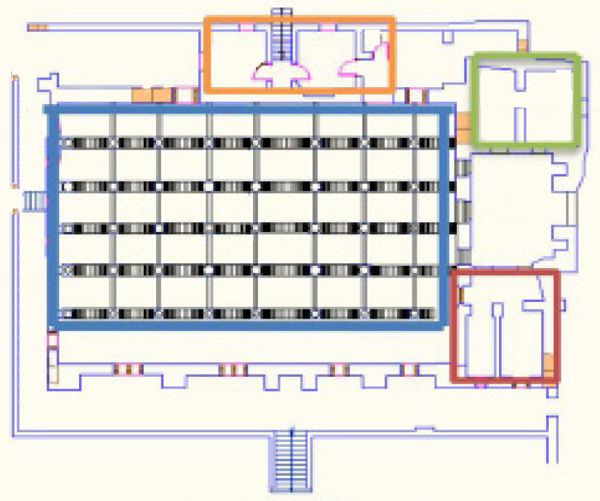
Orange: Entrance, Green : Latrines, Red: work room. Is the Qibla facing south or east?
Now we have a problem with the orientation of this mosque. Which wall is the Qibla wall? Is it the wall on the right? It faces Petra. A Petra Qibla is 95.65 degrees. This wall faces 97.68 so it is only 2.0 degrees off, which is about average for this time for Petra Qiblas. So it seems that the Mosque was oriented towards Petra. It is in the time period when all mosques faced Petra. It is still 28 years before Hajjaj builds his mosque. And it obviously doesn’t face Mecca. So it was started right about the time that the 2nd Islamic civil war started. So they start building, and Ibn Zubayr starts his war. So this war is taking place during the construction of this mosque. So we might assume that this mosque faced Petra, as indeed one wall of the mosque does.
But then something happened. The builders of the mosque seemed to change their plans. Instead of using the east wall, they made the mosque longer, and used the south wall as their Qibla wall. This Qibla makes no sense. It is facing 187.68 degrees south. There is nothing there. And it doesn’t line up with anything. It is just facing off into Africa!
So look again. The orange part indicates the main entrance. The green part is the latrines. Not only did the mosque switch from Petra to a nebulous place in Africa, Abu al-Muhajir placed the latrines directly between his mosque and the new caliph in Damascus.
Well, perhaps that explains why Abu al-Muhajir’s name was stripped from this mosque and it was renamed for a local Imam. And then some time later it was abandoned and used as a workshop.
It is interesting that the 9th century, not to far later, Islamic writers are very hard on Abu al-Muhajir. It seems they are still quite close to the events, and things are still a bit raw, and they make him out to be a small ruler, who never went anywhere or did anything.
Once we reach the 11th century, the Islamic historians are much kinder, and they acknowledge that not only was he the ruler of the army there, but he led the Muslim armies into Tunisia, and established the army’s presence there. OK, that was Abu al-Muhajir’s mosque. What about Uqba?
We have the site of the battle where he died, and the mosque and tomb, known as the Sidi Uqba Mosque.Let’s check them out on The Qibla Tool.
Here we see the mosque is a very large modern building. We see that I have classified this mosque as Unknown, as it was rebuilt in 416 AH and again in 1214 AH. This mosque today faces Mecca, and that is what we would expect of a modern building.
It is assumed that the body of Uqba was buried on this spot, and that one of the later renovations oriented the mosque towards Mecca. After Uqba’s death, Commander Zuhayr ibn Qays, the next commander, redeemed a number of soldiers that had been captured during the battle, and then he sent them back to bury this General’s body and build a mosque.
The building was initially very simple, entirely built of cement. The mosque was renovated several times, some of which records were lost and difficult to assess the exact date and details. One of the renovations was conducted in 1025 AD under the rule of al-Mu’izz ibn Badis.According to the inscription inscribed in the mausoleum a decorative door was added to the mosque. In the 14th century, and another renovation is attributed to 1789 and another in 1800’s.
But what is of interest is the graveyard where the battle took place.
One would expect that the graves would face either Petra or Mecca in the Muslim tradition.
But the graves point south east at 127.38 degrees. The tombs are all lined up, and are still visible today. But the Qiblas of these tombs are unique in the Muslim world. And we have no idea what was going on.
What we do know, is that 46 years later, as the Muslims pushed further west, a mosque was built in Tunis, (known as Jami’ al-Zaytuna) with a Qibla of 154.12 degrees. And then follows what I have called: The Parallel Mosques.
What is important to notice is that just before this in 702 Hajjaj started building Between Mosques. Petra was destroyed in a powerful earthquake in 713 AD (94 AH), which helped Hajjaj promote his between position.Mecca was only beginning to be accepted in Saudi Arabia. So what were these armies supposed to do? They had or orient their mosques in some direction. Do they choose Petra which is now being discounted by so many people, do they choose Mecca which is just becoming popular?
I think they chose a Qibla that was unique to Africa. There already were two mausoleums that were using Qiblas that pointed to some spot in Africa. So it only makes sense that Africans would pray to Africa. Especially if they despised the rulers in Damascus at that time. And so a fourth Qibla, an African Qibla was adopted. (We will talk about this despising the caliph in the next video.) I have found seven mosques that originate from this time period, before the Muslim armies reached Spain. This is still in North Africa when they chose this Qibla.
After the Muslim armies crossed into Spain, and after much of the fighting had settled down, the Muslim rulers set about constructing several magnificent Spanish mosques.
True to form, they looked for a location that already had plenty of building materials, already quarried and squared. Usually this took them to Roman temples, or Christian churches or basilica.
So in Cordoba, the new Muslim government found a suitable building site, and set about building a magnificent mosque. And they chose an African Qibla, just like they had been doing in North Africa. The Cordoba Qibla was set at 157.12 degrees, close enough to the other Qiblas, and easy to build as it followed the old foundations already on the site.
It also had a secondary meaning. It was directly parallel to a line drawn between Petra in Jordan, and Mecca in Saudi Arabia. This is why I have called this kind of Qibla the Parallel Mosques. Perhaps they should be called the African mosques, but that name would not identify their unique Qiblas, as later Abbasid mosques in Africa faced Mecca in Saudi Arabia. There are more later mosques in Africa, but these are parallel to a line drawn between Petra and Mecca, and this is a unique thing and that is why I have called them this.
Now we have eleven written accounts of what happened in North Africa and the move into Spain, and no two of them agree with each other. All of the accounts were written later, much later, and they represent the many different Islamic factions in Spain, known as Al-Andalus.
Now in Andalus, history and genealogy were written in Arabic for the rulers of the new Islamic state, addressing certain issues that those rulers wanted addressed, and avoiding certain issues that the authors felt best to avoid, especially anything that would cast a shadow, or some kind of shame on the ruler or the religion of Islam.
So in the end, each of the writers of the early history of Islam in Spain had their own story. But we can find a common thread that goes through all of these eleven accounts.
The first to arrive was Tariq ibn Ziyad, who was described as a Berber and the leader of an army of Berbers. Tariq was a client ruler of the governor of North Africa, Musa ibn Nusayr, who had his headquarters in Kairouin. He was an Arab with an impeccable Arab background whose father had been a member of the royal guard of Caliph Mu’awiya. When news of the first victories in Spain reached North Africa, more Berbers flocked to join Tariq and Musa ibn Nusayr himself crossed to the peninsula with a force of Arabs. So the Berbers were first, the Arabs were second.
Now, of the eleven accounts of this period, one is the eighth-century Latin Chronica Muz-Arabica, also known as the Chronicle of 754, which survives in a tenth–century codex from northern Spain. The Chronicle of 754 describes the conquerors as Arabs and Moors, and also as Arabs and Saracens. It is clear that the army contained two different ethnic groups.
Another book, Book 9 of the Etymologies by Isidore identifies these Saracens as the descendants of Ishmael, the Arabs of Syria originating from the northern part of the Arabian Peninsula. No mention of Arabs from Mecca.
Chronicle of 754 speaks of the Mauri, and never uses the term ‘Berber.’
Most of these histories speak of continual raids on Spain from Roman times and one of the chronicler’s predecessors, John of Biclar, recorded about the Berber struggles against Byzantine or Roman rule. So back in the 700, the Romans were still seen as the great enemies of everyone in that area.
The first years of the occupation were given to conquest. Armies were faced, cities were attacked, land was taken. They moved forward and governing had to be established. The Arabs and Berbers, and others did not always agree and get along. There is no indication of major mosque building on Spanish land for the first fifty years of occupation. I am sure they did temporary things, but no major construction.
But when they started, all of the mosques of Spain were similar to the mosques of North Africa. They all had some kind of African Qibla, even the graveyards.
While they varied from 187 degrees to 114 degrees, the average Qibla over a 300 year period, from Abu al-Muhajir’s mosque in 678 until 978 was 152.5 degrees. We have around 20 mosques for this time period in our data base. We will add more as we find more.
If you draw a line from Petra, (the northern most Qibla) to Mecca in the south of Arabia, the angle is 155 degrees.
And if you look at the Ka’ba building in Mecca, Saudi Arabia, you will realize that it is facing directly towards the Ka’ba building in Petra. These are not coincidences. Mosque builders thought very carefully about their structures.
However, when the Middle Ages came along, the Petra, Between, and Parallel Qiblas were all forgotten, and the people in the Middle Ages wondered why did they have those Qiblas.
In the next video we will examine some of the ideas put forwards during the Golden Age of Islam.
So we have talked about the Petra Qibla, the Between Qibla and the Parallel Qiblas that are in Spain and North Africa. In the next video we will look at the medieval explanations that were give and why the medieval people thought all these various Qiblas existed.
I am Dan Gibson and this has been another video in the series The Qibla Story.

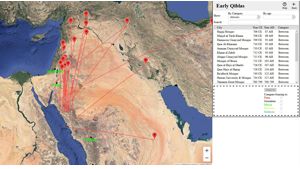
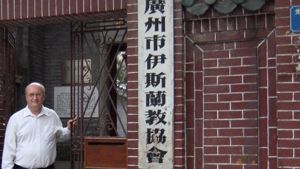
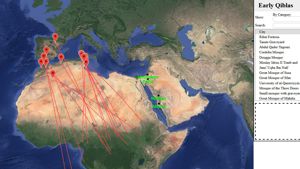
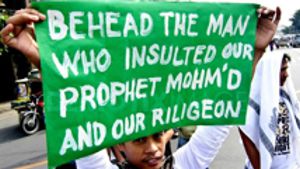
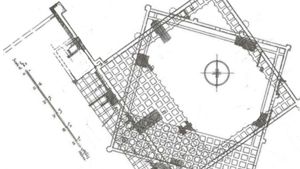
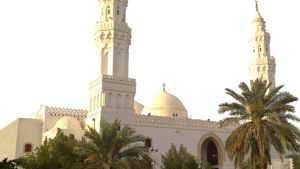
Page Discussion
Membership is required to comment. Membership is free of charge and available to everyone over the age of 16. Just click SignUp, or make a comment below. You will need a user name and a password. The system will automatically send a code to your email address. It should arrive in a few minutes. Enter the code, and you are finished.
Members who post adverts or use inappropriate language or make disrespectful comments will have their membership removed and be barred from the site. By becoming a member you agree to our Terms of Use and our Privacy, Cookies & Ad Policies. Remember that we will never, under any circumstances, sell or give your email address or private information to anyone unless required by law. Please keep your comments on topic. Thanks!